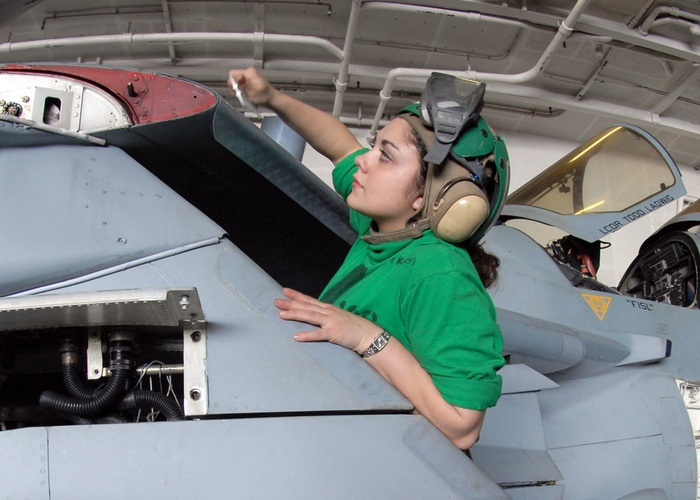Whether an old airframe is on the edge of retirement or a brand-new jet, a robust logistics chain, and parts supply are paramount.
Greenwood Aerospace is your leader in government procurement, aircraft and parts storage and distribution, and military and defense contracting. Our expertise and services include the following:
Procurement of
- Fixed-wing aircraft and associated support
- Aircraft parts & accessories
- Military aircraft parts
- Storage and distribution of parts and supplies to your organization. We will operate as your private warehouse and distribution network.
This is only a sample of our services and capabilities.
Learn more about our services for the defense and military industries. For additional information, you can also contact us here or by emailing sales@governmentprocurement.com.
One of the most in-demand aircraft in the entire U.S. Air Force inventory is probably not what you’d expect. Would you care to wager a guess?
F-16? Nope.
B-1B? No, although it is popular.
No, it’s the relatively new E-11A Battlefield Airborne Communications Node, or BACN for short. Just how popular is the E-11 BACN aircraft? Popular enough that it spent the better part of a decade deployed to Afghanistan. Popular enough that the only way an Air Force pilot would even see one was to volunteer for the mission, and they wouldn’t even see the aircraft until they were in Kandahar. And its payload? JDAMS? Depleted uranium? Not even close. Electronics. More specifically, gateway electronics allow disjointed communications systems and datalinks to connect.
Let’s look closer at this marvel of the skies and what makes it so invaluable to warfighting commanders.
Battlefield Airborne Communications Node: Wifi In The Sky
In more than one place, the Air Force has referred to the E-11 as the “WiFi in the sky.” But what does this mean? Is it just a router that gives troops on the ground access to Instagram? No, it’s not like that.
The BACN system operates as a high-altitude, airborne gateway that translates and relays voice communications, imagery, and other battlespace information from numerous sources across multiple communication networks. This enables ground troops, aircraft, and other assets to communicate seamlessly with one another in real time, regardless of the communication system or network they are using. The BACN system is particularly useful in areas where terrain or other factors limit line-of-sight communications or disrupt the effectiveness of traditional communications systems. It allows for greater situational awareness, better coordination, and improved operational effectiveness for military personnel in the field. Overall, the BACN system is a key component of the USAF's broader efforts to achieve information dominance and maintain battlefield superiority in modern conflicts.

The E-11 Aircraft
The E-11A Battlefield Airborne Communications Node (BACN) aircraft is a highly capable and sophisticated airborne platform that provides multi-theater communication systems support for troops in the field. The E-11A is a modified Bombardier Global Express business jet that is equipped with multiple advanced communications and sensor systems that allow it to perform its critical mission.
The primary objective of the E-11A BACN is to provide a reliable and secure communications link between ground troops, aircraft, and other assets in remote or mountainous regions, where communications can be difficult to establish and maintain. The E-11A BACN is designed to operate as a high-altitude, airborne gateway that translates and relays voice communications, imagery, and other battlespace information from numerous sources across multiple communication networks. This enables ground troops, aircraft, and other assets to communicate seamlessly with one another in real time, regardless of the communication system or network they are using.

The E-11A BACN has various advanced communication and sensor systems, including Line-of-Sight and Beyond-Line-of-Sight radios, Very High Frequency (VHF) and Ultra High Frequency (UHF) radios, and a secure data link system. It also has a highly capable sensor suite with a wide-area surveillance radar, electro-optical/infrared (EO/IR) sensors, and a signals intelligence (SIGINT) system. These systems work together to give the aircraft a comprehensive picture of the battlespace and enable it to perform its critical mission.
BACN Uses The Proven Global 6000 As A Platform
The host platform must have a high ceiling to function well as the WiFi in the sky. Think about it: you have to be able to relay incoming and outgoing data from the ground when they are in rough terrain. Of course, Afghanistan comes to mind. Some of the mountains in the Hindu Kush are over 23,000 feet in height. The aircraft cannot loiter at FL300 and expect to reliably receive and transmit information. The BACN needs to be high. As in, really high. But because it not necessarily a tactical platform, there was no need for a one-off tactical airframe to haul the load, or an expensive platform like an existing fighter (think EA-18G Growler).
Replacing JSTARS
The E-8 JSTARS has been performing this function for a long time now, but it is getting long in the tooth. The cost to operate a large airframe such as the Boeing 707 is enormous, especially since the fleet of B707s is so small and old; there is no longer a large source of parts for this aircraft. Plus, it is just generally expensive. A jet that is less than half of the size, which can also be trained through civilian channels, and has the support of a popular, commercial-off-the-shelf business jet.

The JSTARS platform has done a remarkably good job and has been in continuous service for four decades. And this forty-year run is why it needs to be replaced; there are only so many ways to modify four-decades-old electronics. Technology has advanced so much and so quickly that it has left the JSTARS behind. Plus, there have been significant structural and mechanical issues with the E-8 airframes; one example is a jet that was down for the count for three years. This is bad news for a fleet of fewer than twenty jets. The Global 6000 offers a solution to problems like this. It is a new jet with a zero-time airframe, so many of the problems that second-hand jets have (yes, the 707s that would become E-8s were bought second-hand), like structural issues, are eliminated from the beginning. But it is also a new jet with a strong logistics chain, instead of a tired jet that had already been largely phased out of civilian service.
Premier Airborne Communications Gateway
One of the biggest problems ground combatants faced during the Afghanistan conflict was the disparity of systems. They couldn’t reach out to other communications or weapons systems because of the mountainous terrain, and then if they could reach other systems, the two systems couldn’t communicate. When the Air Force calls BACN ‘WiFi in the sky,’ they aren’t kidding. The BACN provides relay capability so remote outposts can finally reliably contact the outside world. This is why it is so important to have an extremely high ceiling aircraft, and another shortcoming of JSTARS: the E-8, as with most airliners, peaks at about FL400. But the Global 6000 has a ceiling of FL510. That extra eleven thousand feet is over two additional miles of altitude. Yes, it makes a huge difference.
What Is A Gateway?
The Gateway is like how it sounds: it is a gateway between disparate systems so they can talk to each other. These sorts of problems didn’t exist when all of the systems were analog; of course, the casualty rates were much higher, and weapon systems were far less effective and accurate. But weapons systems are often built by competing manufacturers or are built and upgraded at different times. So the weapons communications suites can communicate with the same aircraft type (F-22 to F-22, F/A-8 to F/A-18, etc.) but not with other aircraft types. The problems are even further exaggerated when multiple branches of service are involved (Air Force, Navy, Army, foreign operators).The BACN is equipped with gateway electronics that facilitate communications between these systems so that unlike airframes can coordinate information. So the WiFi in the sky does much more than provide internet access to ground troops below.
And Why Does It Need To Be Airborne?
Some of the mountains in the Hindu Kush are over 24,000 feet tall. To get data connections, the orbiting aircraft has to be really high, and satellites are not always reliable, nor are they always where they need to be to provide the information necessary. Plus, they are not communications gateways.
A New Mission With A Proven Asset
Because of the rapid technological advances, electronics surveillance and special mission aircraft need to be updated. The Global 6000 is a proven aircraft with thousands of flight hours under its belt, including the BACN, which flew exclusively out of Afghanistan for years. In fact, the all-volunteer pilot fore for BACN would only see the fleet once they were on location in Kandahar. The E-11 BACN is not just a 1-for-1 replacement of the JSTARS; it is an advanced technological suite that performs the E-8 JSTARS duties and more, but with far fewer resources tied up. Instead of a crew of 15+ personnel, the E-11 has only two pilots, all other functions are conducted autonomously. The E-11 has already spent years in the desert, which is a truly harsh environment. Why the Global 6000 is highly reliable, it is not unbreakable. It will break; when it does, you need spare parts readily available. Instead of trying to source them when things break, get ahead of the curve. Government Procurement, operated by Greenwood Aerospace, is your one-stop shop for parts procurement, storage, and MIL-SPEC packing.


.svg)


.png)


